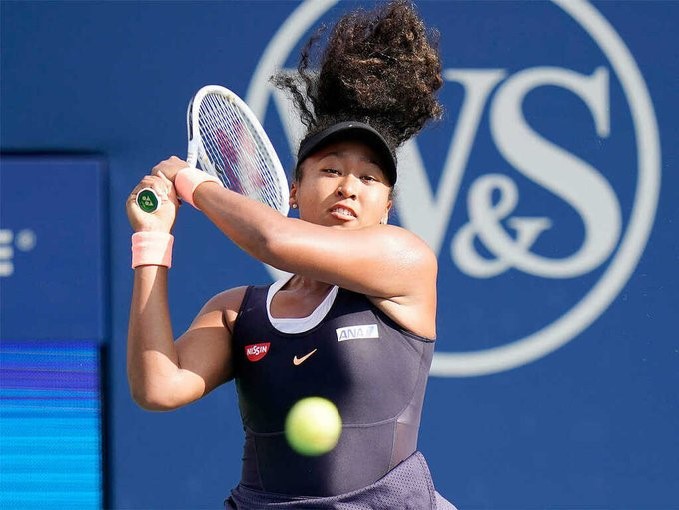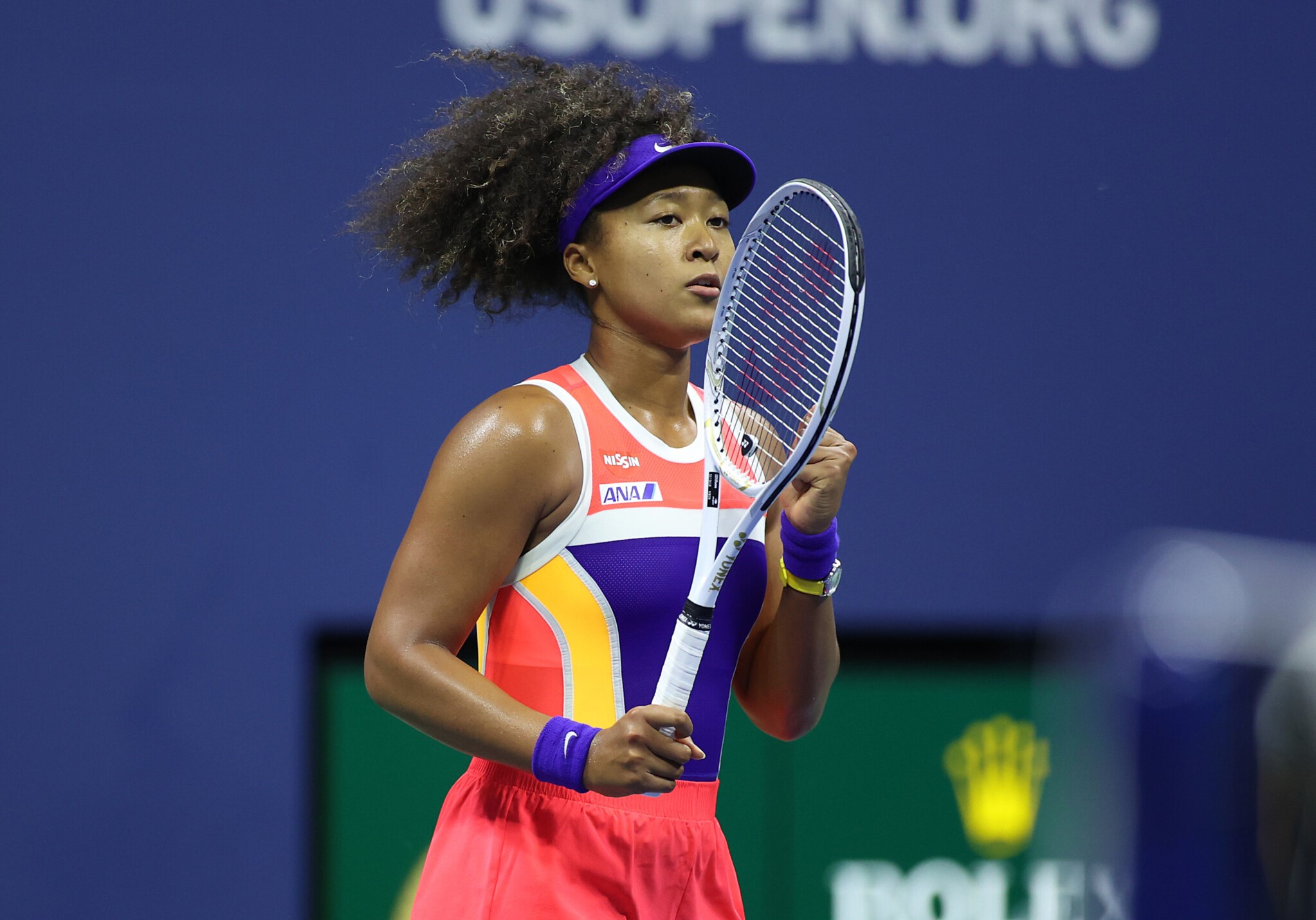There is little doubt that the star of women’s tennis, and probably of the whole of tennis, after the pandemic break has been Naomi Osaka. Despite the thigh injury that has kept her out of Roland Garros and a ranking that sees her only at no. 3, her win at the US Open coupled with the role she has played in the unprecedented uprising that led the Western&Southern Open to postpone the semifinal day by 24 hours have risen Naomi’s profile to transcend the tennis niche and land in the star system mainstream.
However, this last triumphant summer, concluded with no less than a cover on Vogue, was just the icing on the cake for whom had been listed by Forbes as the highest paid female athlete in the world in 2019 (37.4 million dollars between prize money and endorsements) and did not hesitate to fly to Minneapolis to witness first hand the racial disorders following the killing of George Floyd.
This 2020 was supposed to be a very important year for Naomi, as she was preparing to compete at the Tokyo Olympics in her home country of Japan. Despite having spent most of her life living in the United States, she has always competed under the Japanese flag and had been selected as one of the testimonials for this Olympiad.
In order to honor the support she has received throughout her junior years from the Japanese Tennis Federation and as an act of coherence for the choice she made to represent Japan in international competitions, Naomi Osaka announced in 2019 that she would be renouncing U.S. citizenship in compliance with Japanese law that does not formally recognize dual citizenship. In fact, she had benefited from an exemption granted to so-called ‘hafu’, the Japanese term used to define mixed-raced children, that is those with parents of different nationalities. Osaka’s mother, Tamaki, is Japanese, while her father, Leonard François, is a naturalized U.S. citizen originally from Haiti. According to Japanese law, ‘hafu’ children would be able to maintain dual passports until their 22nd birthday, but then they would have to choose one or the other.
Osaka turned 22 on 16th October 2019, and she has repeatedly confirmed she intends to maintain her Japanese passport only.

However, this presents a logistical conundrum to be solved. First of all, Naomi has always lived in the United States, first in Florida where her mother still lives, and now in the Los Angeles area where she has moved in with her boyfriend, rapper YBN Cordae. The move to Southern California has been justified by her desire to undertake several business ventures that would be better attended to while in Los Angeles. But were she to give up her U.S. citizenship, she will lose the right to live and work in the United States and she would need to secure again that right under her Japanese passport.
For an athlete of her stature that would not be difficult, though: there is a visa, called O-1, that is reserved for “the individual who possesses extraordinary ability in the sciences, arts, education, business, or athletics, or who has a demonstrated record of extraordinary achievement in the motion picture or television industry and has been recognized nationally or internationally for those achievements”. This visa can lead quite easily to a “Green Card”, which is the status of Lawful Permanent Resident in the United States, which would give her most of the privileges she would enjoy as a citizen. But the application could take months, if not longer, and could not be started before she renounces her U.S. citizenship. What to do in the meantime?
But this is not the biggest problem she faces. In fact, renouncing U.S. citizenship could trigger an ‘exit tax’, a tax levied by the U.S. Government to discourage high net-worth individuals from leaving the United States and not having to pay taxes to “Uncle Sam” every year. The U.S. is one of the only two countries in the world that taxes its citizens on their worldwide income no matter where they live. The exit tax can be triggered by various situations, but in general it is not due by individuals whose net-worth is lower than 2 million dollars and who on average pay less than 171,000 dollars a year in taxes to the United States. The calculation of the net-worth includes all assets owned by the individual in question, as well as an actualized value of possible future revenue streams (such as a possible future pension). Considering that Naomi Osaka earned an estimated 37.4 million dollars in 2019 alone, it is safe to assume that she would need to pay a substantial amount to forego her U.S. passport.

Osaka would be in the paradoxical situation of having to sign a hefty check to the U.S. Internal Revenue Service to just continue doing what she is doing now, that is live in California and continue to pay California taxes.
The ‘exit tax’ can be minimized through careful structuring of personal assets through the use of gifts and donations to parents and relatives, which under the fledgling Trump administration have enjoyed record-high exemptions from estate taxes, but it would be very difficult to avoid it completely. Nonetheless, asset restructuring is bound to take time, and this may explain why Osaka has not yet renounced her American citizenship, despite the deadline of her 22nd birthday imposed by the Japanese law passed over a year ago.
All individuals who decide to expatriate and forfeit the U.S. citizenship are published quarterly on the Federal Register, the official journal of the federal government of the United States. As of the last publication of these lists, which occurred on 29th October 2020, her name has not yet been included among those who have abandoned the blue passport with the bald eagle.
According to Canadian law firm Moodys LLP that specializes in U.S. citizenship renunciation, the average time for the procedure varies between 5 and 10 months, although some consular offices are heavily back-logged with a wait time of up to 20 months. An interview with a U.S. official at a U.S. Consulate is needed in order to complete the process, as it has to be established whether the individual is involved in illicit activities and wants to escape prosecution or intends to renounce to avoid paying taxes to the U.S. while living in another country. In that case the Attorney General has the power to prevent the individual from entering the United States forever.
But what to do in the meantime while technically in violation of Japanese law? Many Japanese people in the same situation choose to do absolutely nothing. Figures from the Justice Ministry reported by the New York Times suggest there may be almost 900,000 Japanese citizens holding some other passport, and “the government has never revoked Japanese citizenship from anyone who, like Osaka, was granted citizenship at birth”. In most cases, these people keep living their lives avoiding the topic of nationality disclosing their situation to as few people as possible with the tacit acceptance from the government in some kind of international “don’t ask, don’t tell”.
But given Osaka’s international high profile, it would be difficult for her to fly under the radar and adopt this strategy.
During the last Western&Southern Open, Naomi was asked a question about the forthcoming presidential elections in the United States, with perspective vice-president Kamala Harris being born to an Asian mother and a father from the Caribbean, just like her. She replied: “I would say it’s a bit weird, the stance I have to take. I’m not supposed to talk about politics, to be honest, because technically I’m not American, per se. I kind of have always been advised not to say anything. I don’t know. It’s a bit weird when you’re living in the country and you’re seeing the things that are going on, and you kind of want to say what you think but you’re not supposed to”.
Considering her inclination to take a public stand against what she believes is wrong, Osaka could use her immense following to go head-to-head with the Japanese government and force a change in direction that would officially allow some kind of dual citizenship for Japanese people. But that would be a challenge on a whole different level than what she has experienced so far, both on-court and off-court.
Of course, the easiest solution would be to actually leave the United States, move away from her Beverly Hills mansion and relocate to some tax haven where, after paying her dues to the U.S. taxman, she would enjoy millions of dollars more every year than she would with her current set-up. For example, she could move to the Bahamas, a mere 40-minute flight to her mom’s house in West Palm Beach, Florida, travel to the United States when required by her business engagements, and forget about “green card” and taxes.
But Naomi doesn’t look like the type to take the path of least resistance. She is going to stand for what she believes is right, and she will probably find the way to shine even in this difficult predicament.






